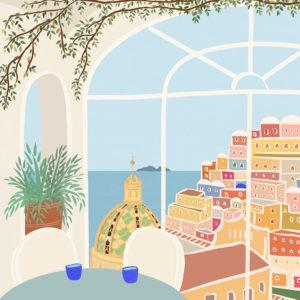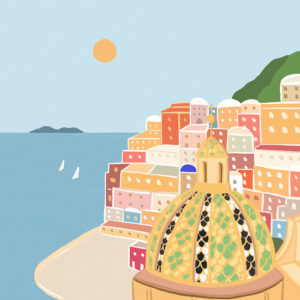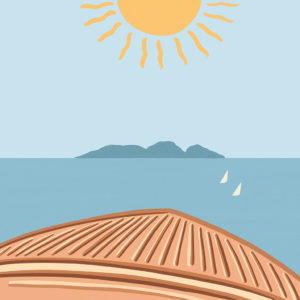This illustration project was created for the iconic Albergo Le Sirenuse in Positano.
The breathtaking views, the bright colors, the light and the unique atmosphere that are experienced in this place are the basis of the inspiration of Anouk’s work.




In the Odyssey, Homer tells of the passage of Ulysses in the waters inhabited by sirens from the seductive song aimed at bewitching the sailors who were then killed.
Warned by the sorceress Circe, Ulysses ordered his men to put wax plugs on their ears to resist the gentle singing of the sirens. Not wanting to get away from the sound of the voices of the sirens, he had himself tied to the main mast of his ship ordering all his men not to untie him for any reason.
Thus, Ulysses was able to listen to the fascinating song without falling prey to the sirens who, to the disappointment of not being able to seduce Ulysses, left themselves to die at sea.
The Parthenope mermaid was carried by the currents between the rocks of Megaride (where Castel dell’Ovo stands today). Fishermen found her and venerated her as a goddess; when his body landed on the islet of Megaride, it dissolved, transforming itself into the morphology of the Neapolitan coast.
So she became the protector of the place and gave the name to this small fishing village to which bel canto is still attributed, a legacy received from her Partenope.
__________________________________________________________________________________________________
According to one of the many ancient legends that speak of the history of Naples, the Latin poet Virgil, who in the Middle Ages was also considered by the people to be a skilled magician, hid in the foundations of the castle an iron cage that contained an egg capable of keeping upright the whole fortress. If the egg had broken, this unfortunate event would have caused the collapse of the castle and a series of disastrous catastrophes in the city of Naples. Hence its name: Castel dell’Ovo.



